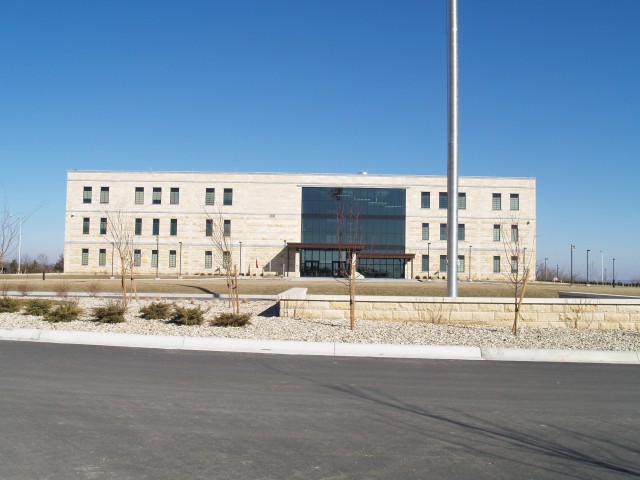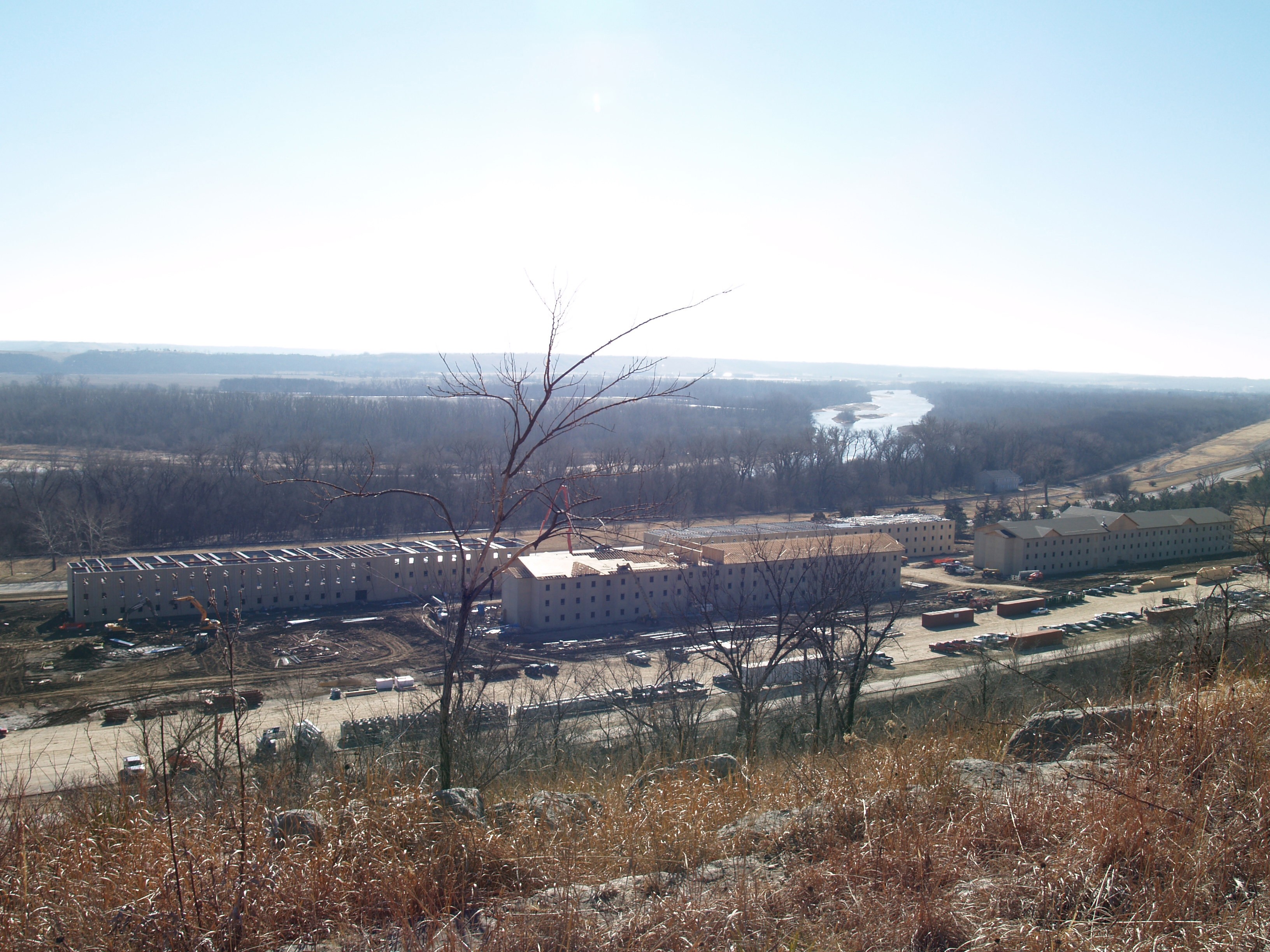Call it an extreme military makeover.
That's essentially what Fort Riley, Kan., has been undergoing since 2003, when the U.S. Army Corps of Engineers began overseeing an ever-increasing number of upgrades to the installation, home to 35,069 Soldiers and civilians.
"There was already a big (military construction) push here," said Maj. James R. Lockridge II, deputy resident engineer for the Corps at Fort Riley. "We started in 2003, and then it got accelerated with the BRAC right around 2005. And then things really started to pick up pace."
The construction boom continues to replace outdated facilities and accommodate growth at Fort Riley. Drive onto post these days, and you will pass numerous mounds of disturbed earth and structures in various stages of completion. When the weather cooperates, an impressive flurry of activity surrounds these sites.
"It seems like if you're gone for a year and you come back, Riley's completely changed," Lockridge said. "And you can almost say that for every year since 2003. It's truly amazing."
Historically, the Corps of Engineers had done about $60 million in annual business at Fort Riley. The Corps will account for $345 million in 2008 alone there. With all that work to be done, the Corps maintains two resident offices on post - one for permanent construction and the other for temporary, modular facilities.
Between fiscal year 2006 and FY 2013, the Corps is projected to guide projects worth a staggering $1.43 billion at Fort Riley.
"It's absolutely mind-boggling the amount of work we are getting accomplished," Michael Goreham, chief of master planning for Fort Riley's Department of Public Works, told the Associated Press last fall.
"We're just coming out of the ground with some of these facilities here," Lockridge said. "Some of it, we're in the final phase of ... and some of it just started."
One of the most prominent new structures - the $50 million 1st Infantry Division Headquarters - opened in November 2007. The facility became necessary when 1st ID returned to Fort Riley from Germany as part of BRAC 2005, and the Corps wasted no time completing it.
"This is beautiful," said Lockridge of the technologically advanced building. "We built this in 11 months, which is just phenomenal."
At the Whitside Barracks construction site elsewhere on post, the Corps is attempting to replicate the quality and sense of urgency that went into the 1st ID headquarters project. The six buildings at the site will house 156 Soldiers apiece. The hope is that the $80 million barracks will be completed in 10 months - instead of the customary 18 - so that when the new Combat Aviation Brigade returns from Iraq in late summer or early fall, its members will be able to occupy them.
The barracks buildings use "tilt-up construction." Concrete panels are formed, shipped to the site and then raised. Then steel beams are added to the interior in a reversal of the more traditional method.
The CAB also needed a suitable home for its rotary-wing aircraft, which will mean a $256 million facelift for Marshall Army Air Field.
"We are completely renovating Marshall," said Lockridge, pointing out that it will be receiving such new features as runways, taxiways, hangars, brigade headquarters, and a crash and rescue center. "They completely ripped out the old runway and rebuilt it."
Another new Fort Riley unit is creating work for the Corps. The 1st Sustainment Brigade will get a $67 million operational home known as the Custer Hill Beddown Facilities.
The complex, which also will be used by the 1st ID Band and Special Troops Battalion, will include 10 buildings totaling more than 235,000 square feet.
"It's a really neat project," Lockridge said. "We just took a swath of land, and we're building a brand-new brigade complex. We're trying to fit two brigades along this ... future road that we're putting in there. And one of those brigades is currently coming out of the ground right now."
Beyond those high-profile projects are new battle-simulation, deployment-supply, rail and dining facilities, along with child development centers and digital training ranges, to name just a few. While making all these new facilities possible, the Corps also continues to help Fort Riley maintain its links to the past.
"We're renovating a lot of the historic buildings here on post," said Lockridge, "to allow troop units to move back into them."
<i>(Editor's note: This is the second in a series of articles about installations affected by the Army's most comprehensive restructuring of forces since World War II and largest military construction program ever. For more on military construction, see the March issue of Soldiers magazine.)




Social Sharing